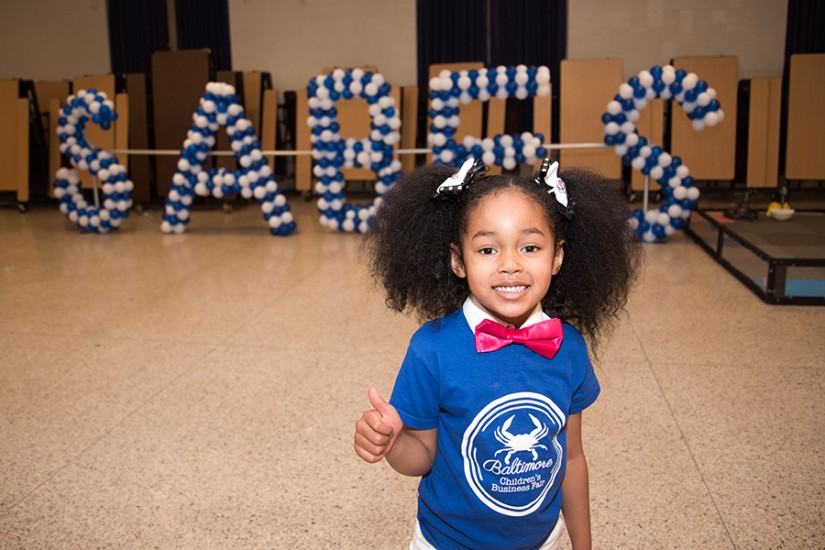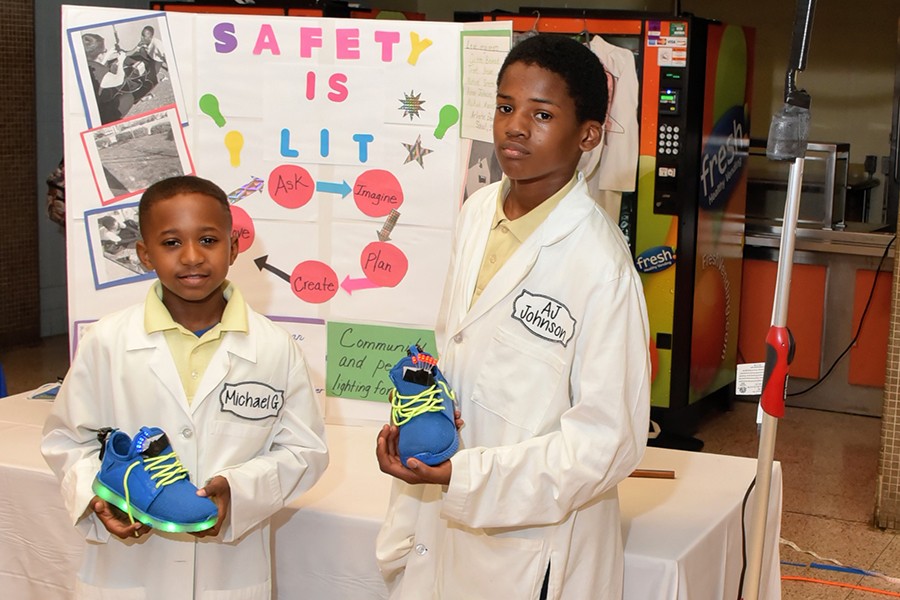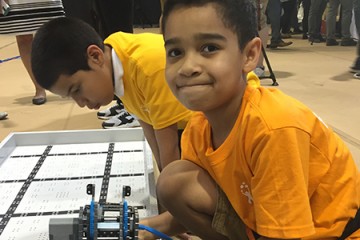A robot that picks up trash with hydraulic hands; a collapsible light pole that resists being knocked down; and a "bio-sand" filter that purifies lead-contaminated water were among the student-conceived-and-built devices on display at this year's SABES STEM Showcase, held earlier this month at Baltimore Polytechnic Institute/Western High School.
The annual event spotlighted the creative and innovative work being done in Baltimore's public elementary and middle schools as part of STEM Achievement in Baltimore Elementary Schools, or SABES, a partnership between Johns Hopkins University's schools of Engineering and Education and Baltimore City Public Schools.
This year's event attracted more than 400 visitors, who enjoyed displays and demonstrations by students from nine city elementary schools, as well as 44 activity stations hosted by 27 organizations including the National Aquarium, the Maryland Science Center, the Maryland Science Olympiad, and the Sierra Club. Visitors also had the opportunity to hear a talk by Barrington Irving, founder of Experience Aviation, a non-profit aimed at inspiring young people to pursue education and careers in STEM fields. When he flew solo around the globe in 2008 at the age of 23, Irving was the youngest person and first black pilot to do so.

Image caption: Launched in 2012, the SABES program aims to strengthen science, technology, engineering, and mathematics education in city public schools
Image credit: Phil Laubner
For Michael Green, a fifth-grader at Arlington Elementary School, SABES afterschool programming has provided opportunities to explore how to make his northwest Baltimore City community a better place.
"The first thing I did was to ask myself how I could use the engineering design process to improve something," he said. "I decided I wanted to make shoes that lighted up to make walking home in the dark safer." At the showcase, Green proudly displayed his creation: a pair of dark blue sneakers equipped with LED-lighted soles, fluorescent yellow laces, and miniature cameras mounted on the back of the heel.
"I used Velcro to put the little camera on the back," explained the student, who was sporting a white lab coat for the occasion. "The camera helps you know what is going on behind you, because you cannot see behind you. There is an app that you can get on your cellphone and see what the camera is seeing."
Shanika Ahmed, a third grader at Barclay Elementary/Middle School in Remington, was trying to solve a different problem with her team's homemade plant irrigation system.
"We wanted something that would be able to water a garden when no one is there to do it," she said, showing off her design: a repurposed one-liter plastic soda bottle attached to a system of straws, which delivered water droplets to a large, rectangular plastic planter filled with soil and sprouting with green leaves.
Ahmed is keen to become an engineer so that she "can design things to make life better for people and for the planet," she says.
That kind of enthusiasm for STEM makes Ruth Young Tyler smile. A facilitator for the fifth grade afterschool STEM program at Arlington Elementary School, Young Tyler says SABES has many benefits.
"The value of this program for students is to enhance their critical thinking skills. The engineering design process provides actionable steps on how to solve issues in the community and in everyday activities," she said. "As students learn and comprehend the importance of the engineering design process, it is my desire that they will develop into thought leaders and subject matter experts."
Originally launched in 2012 with a $7.4 million grant from the National Science Foundation, SABES combines teacher training, a rigorous, hands-on classroom curriculum, and engaging afterschool programming and community events for grades 3 through 5. Since the program began, it has engaged more than 11,000 Baltimore students and trained 345 city teachers.
Correction: Ruth Young Tyler's name was listed incorrectly in an earlier version of this article. The Hub regrets the error.
Posted in Science+Technology, Community
Tagged community, stem, sabes, baltimore city public schools










